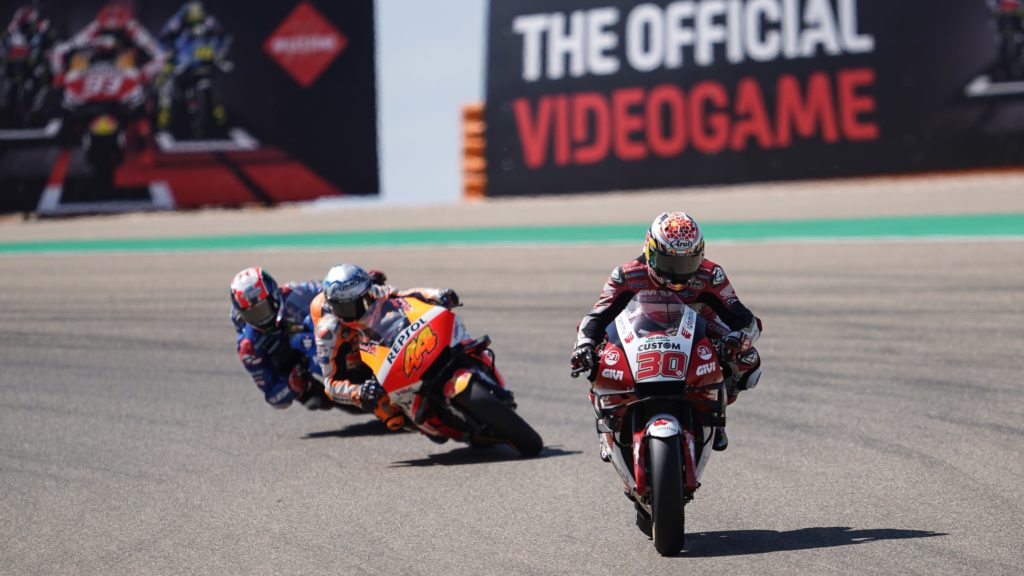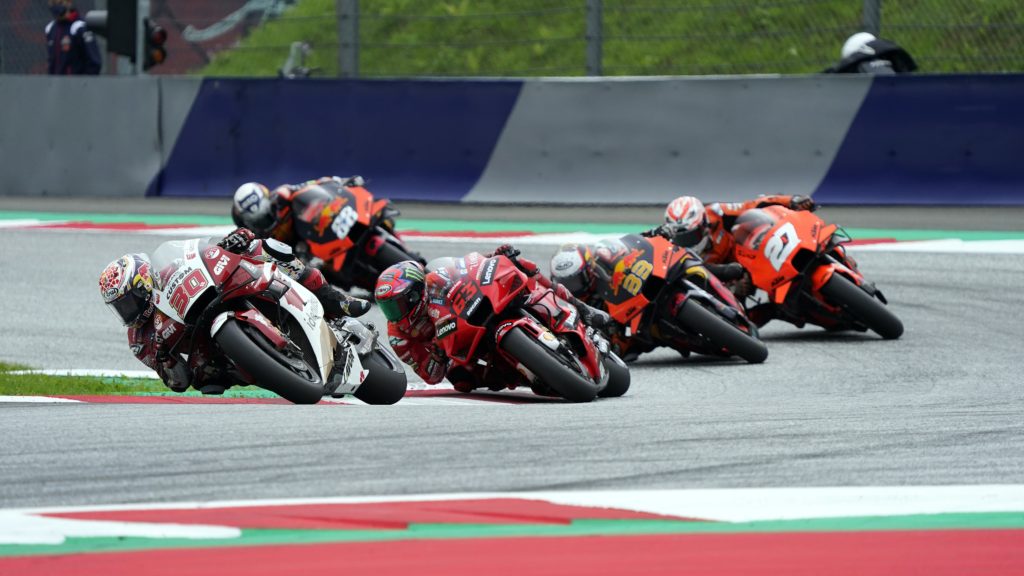How much does a MotoGP bike cost?
MotoGP is the premier motorcycle racing competition governed by the Fédération Internationale de Motocyclisme (FIM). It is called the International Motorcycling Federation in English. And just like Formula 1 cars, MotoGP bikes are very costly. Neither are the bikes available for sale they cannot be used on the streets. What are available in the showrooms are prototypes of MotoGP bikes but not built with the same engines and components. An understanding of the components used in a bike and how it is built is necessary to comprehend why the bikes are so costly.
This article will strive to do that to the best possible extent. In any motorsport, the technology and the cost of the vehicles are the most closely guarded secrets. Prying competitors could use an inkling of new technology, introduced by a manufacturer, to their advantage. A glimpse of a MotoGP bike manufacturer’s balance sheet is virtually impossible. Moreover, only a few components are manufactured at a time, increasing their cost of manufacturing. The components of the MotoGP bikes are handmade. The bikes themselves are hand-assembled.
MotoGP bikes are different from ordinary bikes in many ways. Their engines deliver much more power with better efficiency for the same displacement volume. The frames of MotoGP bikes are made from aluminium to save on weight. The bikes are monitored and controlled by an advanced electronic system called the Electronic Control Unit (ECU). The brakes are made from carbon, unlike the steel brakes used in normal bikes. All the components are manufactured from the most resilient, lightest and most flexible materials available. MotoGP bikes run on special “slick” tyres for better grip on the surface.
LATEST: It’s All Downhill from Here: Why Is Driving So Expensive?

How are MotoGP engines manufactured?
MotoGP engine blocks are made from cast aluminium. The bores and the pistons are hand-machined for high precision. The stroke of a MotoGP engine is much shorter than that of an ordinary bike engine. The crankshaft is built so that it can withstand a lot of strain. A MotoGP bike engine uses pneumatic valves rather than spring valves. The former is much more efficient. A MotoGP engine works at an RPM of between 8,000 and 18,500.
No MotoGP manufacturer will ever publish the performance parameters of their engine. But 1000cc MotoGP engines have to deliver an output of 280HP to reach the kinds of speeds that MotoGP bikes do. In a practice session at the 2021 Qatar GP, a Ducati bike reached a speed of 362.4 km/hr. For that kind of speed, the engine must have delivered slightly over 300HP of power.
What tyres do MotoGP bikes use?
Tyres are one of the few components supplied by a common supplier to all MotoGP competitors. Michelin is the sole supplier of MotoGP tyres. They are also the costliest consumable component in a MotoGP. The tyres have a bald surface to help the motorcyclist get a better grip on the surface. Tyres are the only component of a MotoGP bike in contact with the racing surface. As a result, they suffer a lot of wear. MotoGP tyres are built to last at the most 150 kilometres. The tyres have no thread on the surface and are called “slick”
MotoGP tyres are made from a special compound of polymers. The type of compound used in manufacturing tyres is determined on the track on which the Grand Prix will be held. The compound is constantly researched and developed for better grip and life. MotoGP tyres are warmed before every session. The warmer tyres give the bike a better grip on the surface. The front tyres of a MotoGP bike reach a temperature of 100 degrees centigrade. The rear tyres could reach temperatures in excess of 120 degrees centigrade.
What materials are used in MotoGP bikes?
Although bike manufacturers use different suppliers fr different components, they are all bike and rider-specific. As a result, a supplier is required to manufacture only a few components. This throws the economies of scale out of the window, increasing the cost of each component. Moreover, each component is manufactured from special materials. These materials are light, stronger and suffer less wear than those used in normal bikes. This increases the cost of components and spares phenomenally.
The brakes of a MotoGP bike are generally believed to be made from carbon fibre. They are not. They are made out of a special material called Carbon-carbon. This material was first developed for use in missiles. Fork sliders and swing arms are made from carbon fibre. The chassis of a MotoGP bike is made from cast Aluminium. The use of aluminium, carbon fibre and other materials is to keep the bike light. A lighter bike will use the engine power efficiently and travel faster. It is also easy to manoeuvre a lighter bike. The fairings of MotoGP bikes are also made from carbon fibre.
What does a MotoGP bike cost?
As mentioned earlier. It is difficult to put a finger on the exact cost of a MotoGP bike of any manufacturer. It is however estimated that the cost of a MotoGP 1000cc bike may be upwards of 4 million dollars. This is because the bikes are fully handmade. All the parts of the bike are made individual. The manpower used in making the bike is the highest cost factor after the cost of the engine.
A 100cc engine will cost $425,000 at least. Another 25-30 thousand dollars have to be spent on essential parts. A MotoGP bike has to be maintained. The tyres and the engine oils have to be changed after every session. Tyres of a MotoGP bike alone may cost more than $15,000. The engine oils are costly. The brake pads need changing after each session also. These are made from a very costly material.
LATEST: MotoGP Bikes vs. Normal Bikes; What’s The Difference?

The ECU is generally supplied by one manufacturer. It controls the traction and the engine of the bike. The ECU also monitors the temperature of the tyres, engine oil level, fuel level among various other things. The ECU also costs a lot and is not used in ordinary bikes. As the output power of the engine increases, so does the speed of the bike. An ECU is essential to control a bike.
The cost of research and development is a silent but very important component in the cost of a bike. MotoGP bikes are continuously evolving in their search for greater speed and control. This evolution is made possible due to research and development. Companies and spare part manufacturers continuously collect data from the bike performance in each Grand Prix. This data is analysed and used to search for better materials and manufacturing processes. Companies do not publish their research and development costs for obvious reasons.
Every MotoGP bike is insured in anticipation of damage repair costs. Repairing a damaged MotoGP bike may cost anywhere between $25,000 to $100,000 or more. Insurance is paid to cover this cost. This adds to the cost of a MotoGP bike.
Honda and Ducati are considered to be the costliest MotoGP bike in that order. A Ducati bike is estimated to cost upwards of $4 million.
